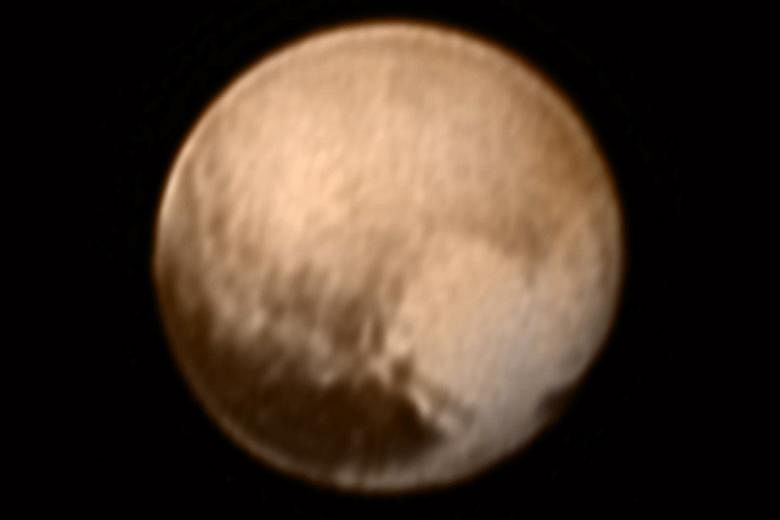CAPE CANAVERAL (Florida) • Nasa's New Horizons spacecraft is poised to become the first probe to visit distant Pluto, capping a reconnaissance of the solar system that began more than 50 years ago.
The five-billion-km journey to Pluto, an unexpectedly peach-hued world with contrasting dark and light regions across its face, has taken more than nine years.
The probe's latest picture, released yesterday, is giving scientists much better indications of the geology on the remote planet. The black-and-white view reveals a vast band of patterned terrain stretching around the globe for roughly 1,500km, the BBC reported.
Nasa's spacecraft is due to fly by on Tuesday, when it will be just 12,500km above the surface, giving scientists their best chance to get the most detailed images of Pluto.
For most of the trip - the equivalent of flying 120,477 times around Earth - the probe hibernated, saving wear-and-tear on its systems and trimming ground control costs to help the mission meet its US$720 million (S$973 million) budget.
New Horizons awoke in January to begin observations of Pluto and its primary moon, Charon, located beyond Neptune in the Kuiper Belt region, discovered in 1992.
Before then, Pluto was considered an odd, outlier ninth planet of the solar system, smaller than Earth's moon and out of place among the gas giants that occupy what was previously considered the outer solar system.
Six months after New Horizons launched, the International Astronomical Union reclassified Pluto as a "dwarf planet". Astronomers have since discovered about 2,000 more Kuiper Belt residents out of a population of hundreds of thousands.
Ironically, it was the discovery of the Kuiper Belt that provided the scientific motivation and money for a mission to Pluto. Scientists believe the Kuiper Belt holds fossils from the formation of the solar system 4.6 billion years ago.
New Horizons will conduct its science on the fly, much like Nasa's Pioneer, Mariner and Voyager missions of the 1960s to the 1980s, when exploration of the solar system began. Built lean, New Horizons does not carry propellant for a braking burn to slow down and slip into orbit around Pluto.
That means timing is crucial for Tuesday's flyby. New Horizons will have just 30 minutes for the most important part of the mission, including photographing Pluto and Charon, determining what the icy worlds are made of and scanning Pluto's atmosphere - all done while the probe and Pluto cross paths.
"After travelling for nine and half years, we have to know within 100 seconds where Pluto is," said project manager Glen Fountain.
New Horizons is expected to be closest to Pluto at 7.49pm Singapore time on Tuesday. REUTERS

